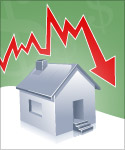You know, lately I've been digging into what's happening with gold, and let me tell you, some experts are making some pretty bold predictions. The gold price forecast is definitely turning heads, with whispers of it potentially soaring to a staggering $6,000 per ounce by 2029. That's a massive jump from where we are now! Analysts at JPMorgan suggest this could happen if even a small fraction – just 0.5% – of the U.S. assets held by investors outside the country shifts towards gold. It sounds like a big “if,” but let's dive deeper into why this might actually be more plausible than you think.
Gold Price Forecast: Could Prices Really Hit $6,000 by 2029?
Why the Buzz Around Gold?
For ages, gold has been seen as a safe haven, a place to park your money when things get a little shaky in the world. And lately, there's been no shortage of shaky situations! Think about it:
- Global Uncertainty: From geopolitical tensions to economic worries, there's a lot making investors nervous. Gold tends to shine when traditional assets like stocks look risky.
- Central Bank Actions: After Russia's invasion of Ukraine and the subsequent freezing of some of its assets, it seems like many central banks are rethinking their reliance on certain currencies. This has led to increased gold buying as a way to diversify their holdings.
- Inflation Fears: When the cost of everyday things goes up, people often turn to gold as a way to preserve their wealth because it's seen as a hedge against inflation.
- Government Debt: The amount of money some governments owe is also raising concerns, and gold is often viewed as a more stable alternative.
Now, when you throw in the possibility of even a tiny shift in how much faith foreign investors have in U.S. assets, as JPMorgan's analysts point out, the impact on gold prices could be huge. Why? Because the supply of gold doesn't really grow that much each year. So, even a small increase in demand can lead to a significant jump in price.
The Trump Factor and Shifting Global Dynamics
Interestingly, the analysts at JPMorgan highlighted that the trade war initiated by former President Trump actually added fuel to gold's rally. It made some foreign investors question the stability of U.S. assets. Plus, talk about “burden sharing” – suggesting that other countries benefiting from the dollar's reserve currency status should contribute more – might also be making some investors abroad a bit uneasy.
As the JPMorgan analysts put it, “The recent period in financial markets has demonstrated that interest and trust in US assets are already being questioned, and the US is vulnerable to capital outflows.” This is a pretty significant statement. If this trend continues, even a small trickle of money moving from U.S. assets to gold could create a big wave in the gold market.
Breaking Down the Numbers: 0.5% Can Make a Big Difference
Let's get into the nitty-gritty. JPMorgan estimates that if just 0.5% of the total U.S. assets held by foreign investors were reallocated to gold, it would mean about $273.6 billion flowing into the precious metal over four years. That's roughly 2,500 metric tons of gold.
Now, while 2,500 metric tons might sound like a lot, it's only about 3% of the total gold holdings worldwide. However, as the analysts point out, “the additional demand impulse on a quarterly basis is quite immense.” Because the supply of new gold is limited, this extra demand could really push prices upwards. They even project that this scenario could lead to annual returns of around 18% for gold investors!
My Thoughts on This Bold Prediction
Honestly, while an 80% jump to $6,000 by 2029 sounds like a huge leap, the reasoning behind it makes a lot of sense to me. We're living in a time of significant global shifts and uncertainties. The traditional faith in the dominance of U.S. assets isn't as rock-solid as it once seemed.
Factors like:
- Geopolitical Instability: Conflicts and tensions around the world are likely to continue driving investors towards safe-haven assets.
- Inflationary Pressures: While there have been efforts to control inflation, it remains a concern, and gold has historically acted as a good hedge.
- Currency Debasement: Massive government spending and quantitative easing can sometimes lead to the devaluation of currencies, making gold more attractive.
These are all ongoing issues that could very well contribute to a sustained increase in the demand for gold.
Of course, it's important to remember that this is just one potential scenario put forth by analysts. The future is uncertain, and there are many factors that could influence the price of gold. For instance, a sudden period of strong global economic growth and renewed confidence in traditional assets could dampen the enthusiasm for gold.
What Other Experts Are Saying
It's also worth noting that JPMorgan isn't the only one with a bullish outlook on gold. Earlier this year, Goldman Sachs also raised its year-end gold price forecast, suggesting it could even approach $4,500 in some extreme cases. This kind of consensus among major financial institutions adds weight to the idea that gold still has significant upside potential.
Navigating the Gold Market
If you're thinking about investing in gold, it's crucial to do your own research and understand the risks involved. You can invest in gold in various ways, including:
- Physical Gold: Buying gold bars or coins.
- Gold ETFs (Exchange-Traded Funds): These funds track the price of gold and can be traded like stocks.
- Gold Mining Stocks: Investing in companies that mine gold (though their performance can be influenced by factors beyond just the price of gold).
Each of these options has its own set of advantages and disadvantages, so it's important to choose what aligns best with your investment goals and risk tolerance.
Final Thoughts: A Golden Opportunity or Just Wishful Thinking?
While predicting the future price of anything is always a tricky business, the scenario laid out by JPMorgan's analysts regarding the gold price forecast to $6,000 by 2029 is certainly compelling. The confluence of global uncertainties, potential shifts in investment preferences, and the limited supply of gold creates a strong argument for continued price appreciation.
Whether it reaches that exact $6,000 mark remains to be seen. However, based on the current trends and the analysis from experts, it seems to me that gold is likely to remain a significant asset in the years to come, and its price could indeed climb considerably higher. It's definitely something I'll be keeping a close eye on!
Diversify Beyond Gold: Invest in Real Estate
While experts predict gold could reach $6,000 by 2029, smart investors are also turning to income-producing real estate for long-term wealth and cash flow.
Norada offers turnkey investment properties in top-performing U.S. markets—ideal for diversifying your portfolio beyond commodities.
HOT NEW LISTINGS JUST ADDED!
Speak to a Norada investment advisor today (No Obligation):
(800) 611-3060
Read More:
- The Risk of New Tariffs: Will They Crash the Stock Market and Economy?
- Stagflation Alert: Economist Survey Predicts Weak Q1 GDP Due to Tariffs
- Goldman Sachs Significantly Raises Recession Probability by 35%
- 2008 Crash Forecaster Warns of DOGE Triggering Economic Downturn
- Stock Market Predictions 2025: Will the Bull Run Continue?
- Stock Market Crash: Nasdaq 100 Tanks 3.5% Amid AI Concerns
- Stock Market Crash Prediction With Huge Discounts on Bitcoin, Gold, Houses
- S&P 500 Forecast for the Next Year: What to Expect in 2025?
- Stock Market Predictions for the Next 5 Years
- Echoes of 1987: Is Today’s Stock Market Crash Leading to a Recession?
- Is the Bull Market Over? What History Says About the Stock Market Crash
- Wall Street Bear Predicts a Historic Stock Market Crash Like 1929
- Economist Predicts Stock Market Crash Worse Than 2008 Crisis
- Next Stock Market Crash Prediction: Is a Crash Coming Soon?
- Stock Market Crash: 30% Correction Predicted by Top Forecaster





